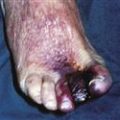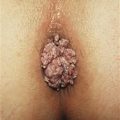Thirst
True thirst as a symptom, is usually associated with two other symptoms, i.e. drinking excessive amounts of water (polydipsia) and excessive urination (polyuria).
History
It is important to distinguish between thirst and a dry mouth. Enquire about the onset of thirst, whether it is acute or chronic. Take a full dietary history, including salt intake and ingestion of spicy foods. A history of tiredness and lethargy with weight loss will suggest diabetes mellitus. Check for signs of infection. Check for a history of vomiting or diarrhoea. A full drug history should be taken, as some drugs, e.g. anticholinergics, can result in dryness of the mouth and therefore patients may ingest excessive quantities of water, giving rise to polyuria. A history of any salivary gland swelling in association with dry eyes, dry mouth and arthritis should be sought, which would suggest Sjögren’s syndrome. A history of any chronic blood loss should be sought. Malignancy and hyperparathyroidism are a common cause of chronic hypercalcaemia, which can lead to polyuria by an intrinsic osmotic effect or by precipitation of nephrogenic diabetes insipidus. Cranial diabetes insipidus can result from severe, blunt head injuries, craniopharyngioma, pineal gland tumours or as a transient postoperative complication following neurosurgery. Full psychological assessment may be required if psychogenic polydipsia is suspected.
Examination
Check the temperature. Look for signs of dehydration, e.g. dry coated tongue, loss of skin turgor. Look for evidence of recent weight loss. Look for signs of Sjögren’s syndrome, i.e. symmetrical enlargement of the salivary glands both parotid and submandibular. Check for dry eyes and arthritis.




